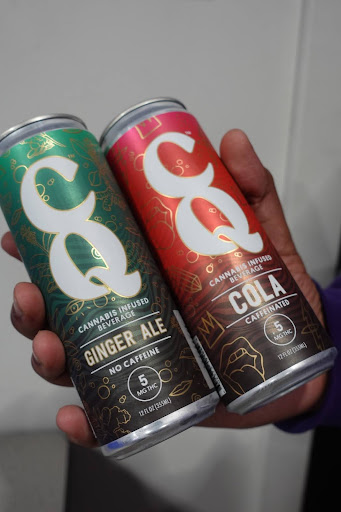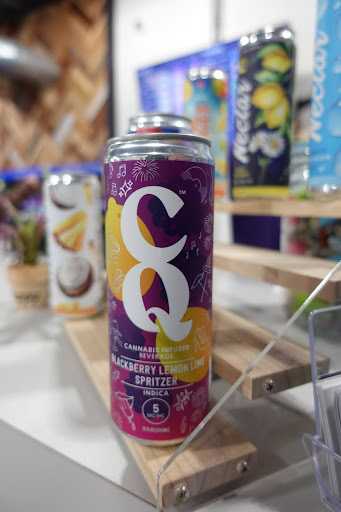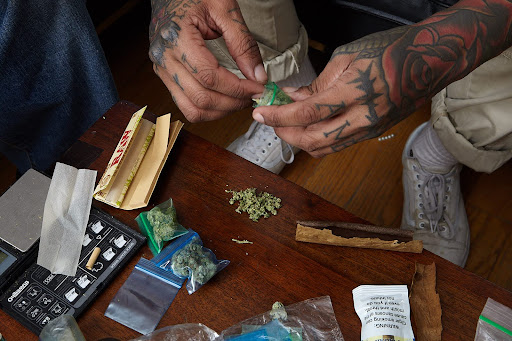 Alcohol has always been the default—a rite of passage wrapped in happy hours, house parties, and college celebrations. But for a growing number of young adults — especially those with family histories of alcohol abuse — the script is changing. Instead of reaching for a drink, they’re reaching for edibles and infused beverages.
Alcohol has always been the default—a rite of passage wrapped in happy hours, house parties, and college celebrations. But for a growing number of young adults — especially those with family histories of alcohol abuse — the script is changing. Instead of reaching for a drink, they’re reaching for edibles and infused beverages.
Cannabis isn’t just “as bad” as alcohol, as some may put it. Alcohol causes more damage and long-term detriment. It was national policy long before cannabis became mainstream. That dynamic is shifting, and for many, now is the time to break the cycle.
Alcohol’s Deep Roots — and Deep Damage
We all know the headlines: teens drinking underage, generational alcoholism, lives broken by prescription pills. In cities where alcohol is handed to minors like candy, these problems repeat like clockwork. Root causes? Often broken families, trauma, and no alternative.
Meanwhile, metrics speak volumes. In Colorado, the first state to legalize recreational marijuana, traffic fatalities involving drunk driving decreased, accounting for 15.9% of serious-injury crashes before legalization to 14.2% after. Meanwhile, cannabis-positive fatalities increased, but it’s hard to pin blame accurately since THC lingers in the system much longer than impairment.
Still, the number of people killed by booze-related crashes, liver disease, and prescription overdoses dwarfs those linked directly to cannabis, because cannabis doesn’t kill people.
The Numbers Don’t Lie
– Opioid overdose deaths climbed sharply from 2010 to 202, reaching 30 per 100,000 in New York in 2021, up from 8 in 2010.
– States with medical marijuana laws saw 25% fewer opioid overdose deaths between 1999–2010.
– Cannabis-only traffic fatalities rose post-legalization; alcohol-related crash fatalities remained flat or declined.
What it shows is this: Swapping alcohol or pills for controlled cannabis use isn’t about taste — it’s about survival.
 The Rise of Edibles and Infused Beverages
The Rise of Edibles and Infused Beverages
Infused beverages and edibles — think gummies or drinks with 5 mg of THC, or microdosed bars — are leveling the playing field with beer and wine on price and ritual. That 5 mg dose is about on par with a light beer, socially acceptable, and far less likely to trigger dependence.
Behind the scenes, science plays. Nanoemulsion technology breaks THC oil into water-soluble micro-particles, so the plant mixes easily with water-based drinks — no oil slicks, just smooth sips and predictable effects. That’s how cannabis moves from greasy brownies to sleek refreshers.
In markets like Colorado and Massachusetts, such products rival beer in price and accessibility, and they come without the hangovers, liver damage, or blood alcohol limits.
Health, Harm Reduction, and Real Choices
Alcohol is a depressant tied to addiction, violence, liver cirrhosis, pancreatitis, and risky driving. Drugs like opioids and pills cause thousands of deaths yearly. Meanwhile, cannabis overdose deaths? None.
The debate shouldn’t be “is cannabis safe?” but “safer than what?” In pain management, cancer treatment, PTSD care, and athletic recovery, cannabis serves as a therapeutic tool, not just recreation. States with legal cannabis have seen decreases in prescription opioid use.
The choice isn’t perfect. Cannabis can impair reaction time, especially when mixed with alcohol, but booze doubles your crash risk, while cannabis doesn’t carry a measurable fatal overdose risk.
Where Innovation Meets Reality
This model only works in markets where regulated cannabis is normalized — and where the stigma is shifting. Beer costs $3–5 per drink, and an infused 5 mg THC beverage can be found at similar prices in Colorado or Massachusetts.
That price parity matters. It means young adults facing “generational curses”— families where alcohol abuse was the norm — have real alternatives. Instead of half-empty nights and regrets, they find microdosed calm. Instead of addictive pills, they choose slow-release relief.
 A Thoughtful Transition
A Thoughtful Transition
Cannabis isn’t a cure-all. In states with legalization, some younger users still hit emergency rooms after potent “moonshine” edibles, but regulated, low-dose options help avoid that.
Nanosolutions mean predictable effects, clear dosages, and controlled experiences. Cannabis grown at home or bought from trusted local retailers now comes with transparency and intention.
Parting Thoughts
The shift from drinking and pills to edibles and infused beverages isn’t nostalgia, it’s a revolution in how we heal, celebrate, and cope.
Young adults aren’t just swapping substances — they’re demanding better: better health, better habits, better lives.
And that’s a change worth toasting, with toothy smiles across the board. Next time someone raises a glass, maybe they should raise an infused can.

 The Rise of Edibles and Infused Beverages
The Rise of Edibles and Infused Beverages A Thoughtful Transition
A Thoughtful Transition